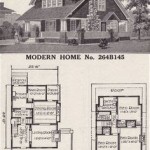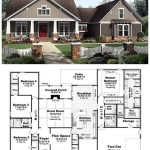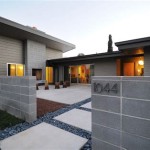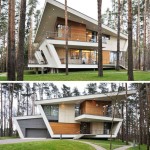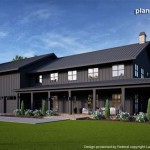Hillside house plans are specialised architectural blueprints designed to accommodate the unique challenges and opportunities presented by building on sloped terrain. These plans consider factors such as foundation stability, drainage, and accessibility to create homes that seamlessly integrate with their surroundings.
Whether it’s a mountain retreat nestled amidst towering peaks or a coastal haven overlooking the ocean, hillside houses offer a distinctive blend of scenic views and architectural creativity. They may incorporate terraces, retaining walls, and innovative designs to maximise natural light and capitalise on the slope’s orientation.
Hillside house plans demand meticulous attention to various aspects. Here are ten crucial points to consider:
- Foundation stability
- Drainage and erosion control
- Access and circulation
- Natural light and ventilation
- View orientation
- Retaining walls and terraces
- Structural integrity
- Energy efficiency
- Landscaping and site planning
- Local building codes
Thoughtful consideration of these factors ensures a hillside home that is both functional and aesthetically pleasing.
Foundation stability
Ensuring foundation stability is paramount in hillside house plans. Sloped terrain can exert significant lateral forces on a home’s foundation, potentially leading to structural damage or even collapse. Therefore, it is crucial to employ robust foundation systems that can withstand these forces and prevent movement.
- Deep foundations: These extend below the frost line and into stable soil or rock, providing a solid base for the structure.
- Stepped footings: Used on sloping sites, these footings are constructed in a series of steps, following the contour of the land. This helps distribute the weight of the house evenly and reduces the risk of sliding.
- Retaining walls: These walls help retain soil and prevent erosion, which can undermine the foundation. They are often used in conjunction with other foundation systems to provide additional support.
- Grade beams: These reinforced concrete beams are placed around the perimeter of the foundation and help distribute the weight of the house more evenly.
By carefully considering foundation stability and implementing appropriate measures, hillside homes can be constructed to withstand the unique challenges of sloped terrain, ensuring the safety and longevity of the structure.
Drainage and erosion control
Effective drainage and erosion control measures are essential in hillside house plans to prevent water damage, soil erosion, and structural issues. Here are key considerations:
Grading and Drainage
Proper grading directs water away from the house and prevents it from pooling around the foundation. Grading should slope away from the house at a minimum of 2%, ensuring water flows downslope and into appropriate drainage systems.
Gutters and Downspouts
Gutters and downspouts collect and channel rainwater from the roof, preventing it from saturating the soil around the foundation. Downspouts should extend at least 4 feet away from the house and discharge water into a drainage system or onto a splash block that disperses the water.
French Drains
French drains are perforated pipes buried underground that collect and redirect groundwater and surface water away from the foundation. They are typically installed along the perimeter of the house or in areas where water tends to accumulate.
Retaining Walls and Terraces
Retaining walls and terraces help prevent soil erosion on steep slopes. Retaining walls hold back soil, while terraces create level areas that slow down water flow and allow it to infiltrate the soil rather than eroding it.
Plantings and Landscaping
Plantings and landscaping can help control erosion by stabilizing the soil and absorbing water. Native plants with deep root systems are particularly effective in holding soil in place and preventing erosion.
By implementing these drainage and erosion control measures, hillside homes can effectively manage water flow, protect the foundation from water damage, and preserve the integrity of the surrounding landscape.
Access and circulation
Access and circulation in hillside house plans require careful consideration to ensure safe and convenient movement throughout the home and its surroundings. Here are several key aspects to consider:
Driveways and Entrances
Driveways and entrances should be designed to provide safe and accessible entry to the house from the street or road. The slope of the driveway should be gradual and well-maintained to prevent slipping or accidents, especially during inclement weather. In some cases, switchbacks or retaining walls may be necessary to create a manageable slope.
Walkways and Stairs
Walkways and stairs provide access to different levels of the house and connect it to outdoor areas. They should be designed with safety in mind, featuring non-slip surfaces, adequate lighting, and handrails where necessary. Stairs should have a comfortable tread depth and riser height to prevent tripping or falls.
Interior Circulation
Interior circulation refers to the flow of movement within the house. In hillside homes, it is important to consider how different levels are connected and how spaces transition into each other. Open floor plans, split-level designs, and well-placed windows can help create a seamless and efficient flow of movement.
Outdoor Living Spaces
Outdoor living spaces, such as decks, patios, and balconies, are often essential in hillside homes to take advantage of the views and natural surroundings. These spaces should be easily accessible from the main living areas and designed to provide comfortable and inviting outdoor experiences.
By carefully considering access and circulation in hillside house plans, homeowners can ensure that their homes are not only visually appealing but also safe, functional, and enjoyable to live in.
Natural light and ventilation
Natural light and ventilation are crucial considerations in hillside house plans to create healthy, comfortable, and energy-efficient living spaces.
Maximizing Natural Light
Hillside homes often have unique opportunities to maximize natural light due to their elevated position and potential for large windows and skylights. By strategically placing windows and skylights, architects can harness natural light to illuminate interior spaces, reducing the need for artificial lighting and creating a brighter, more inviting atmosphere.
Large windows and sliding glass doors provide expansive views and allow natural light to penetrate deep into the home. Skylights, strategically placed on south-facing slopes, can flood interior spaces with daylight even on overcast days.
Promoting Natural Ventilation
Natural ventilation is essential for maintaining good indoor air quality and reducing energy consumption. In hillside homes, natural ventilation can be achieved by utilizing prevailing breezes and creating cross-ventilation.
Windows and doors placed on opposite sides of the house allow air to flow through, naturally ventilating the space. Cross-ventilation is particularly effective in hillside homes that are built on slopes that experience prevailing winds.
By carefully considering natural light and ventilation in hillside house plans, architects can create homes that are not only visually appealing but also healthy, comfortable, and energy-efficient.
View orientation
View orientation is a crucial consideration in hillside house plans, as it can significantly impact the overall livability, comfort, and aesthetic appeal of the home.
- North-facing views: North-facing views offer consistent, indirect natural light throughout the day, reducing the need for artificial lighting and creating a more comfortable indoor environment. North-facing orientations are ideal for living spaces, home offices, and bedrooms, as they provide a bright and evenly lit space without excessive heat gain.
- South-facing views: South-facing views maximize solar exposure, providing warmth and natural light during the winter months. However, they can also lead to excessive heat gain during the summer, so careful consideration should be given to shading strategies such as overhangs, awnings, or deciduous trees.
- East-facing views: East-facing views offer beautiful morning light, creating a warm and inviting atmosphere in the early hours of the day. They are suitable for kitchens, dining areas, and bedrooms, where natural light can energize and uplift.
- West-facing views: West-facing views provide stunning sunsets and dramatic evening light. However, they can also result in excessive heat gain in the late afternoon and evening, especially during the summer months. West-facing orientations are best suited for living rooms, entertainment spaces, or guest rooms, where the focus is on enjoying the evening views.
By carefully considering view orientation in hillside house plans, architects can create homes that not only capitalize on the surroundingbut also provide comfortable and visually appealing living spaces.
Retaining walls and terraces
Retaining walls and terraces are essential elements in hillside house plans, serving both functional and aesthetic purposes.
- Retaining soil and preventing erosion: Retaining walls are vertical structures built to hold back soil and prevent it from eroding. They are commonly used on sloping sites to create level areas for construction and to stabilize the hillside. Terraces are gently sloping planes or platforms created by cutting into the hillside and retaining the soil with walls or other structures. They serve a similar purpose to retaining walls but can also provide usable outdoor space.
- Creating usable outdoor space: Terraces can extend the living space of a hillside home by creating flat areas for patios, decks, or gardens. They can also improve accessibility and circulation within the property, allowing for easier movement between different levels.
- Enhancing aesthetics: Retaining walls and terraces can add visual interest and architectural character to a hillside home. They can be constructed using a variety of materials, such as stone, concrete, or wood, and can be designed to complement the overall style of the house.
- Managing drainage and water flow: Retaining walls and terraces can help control water flow on a hillside, preventing erosion and water damage to the house. They can be combined with drainage systems, such as French drains or gutters, to direct water away from the foundation and prevent soil saturation.
By incorporating retaining walls and terraces into hillside house plans, architects can create functional, visually appealing, and sustainable homes that seamlessly integrate with the natural contours of the land.
Structural integrity
Structural integrity is of utmost importance in hillside house plans, as these homes are subject to unique forces and challenges due to their location on sloping terrain. Ensuring structural integrity involves careful consideration of various factors and the implementation of robust design strategies.
Foundation design
The foundation of a hillside home is critical for its stability and longevity. It must be designed to withstand the lateral forces exerted by the slope, as well as the vertical loads of the structure. Common foundation types used in hillside construction include:
- Deep foundations: These extend below the frost line and into stable soil or rock, providing a solid base for the structure.
- Stepped footings: Used on sloping sites, these footings are constructed in a series of steps, following the contour of the land. This helps distribute the weight of the house evenly and reduces the risk of sliding.
- Retaining walls: These walls help retain soil and prevent erosion, which can undermine the foundation. They are often used in conjunction with other foundation systems to provide additional support.
Lateral support systems
Lateral support systems are crucial for resisting the lateral forces imposed by the slope. These systems include:
- Shear walls: These are structural walls designed to resist lateral forces parallel to their plane. They are typically made of plywood or oriented strand board (OSB) and are placed strategically throughout the house.
- Moment frames: These are structural frames made of steel or reinforced concrete. They are designed to resist lateral forces by bending, rather than by relying on shear strength.
- Bracing: Bracing systems, such as diagonal beams or trusses, can be used to provide additional lateral support to walls and roofs.
By carefully considering these factors and implementing appropriate design strategies, hillside homes can be constructed to withstand the unique challenges of sloped terrain, ensuring the safety and longevity of the structure.
Energy efficiency
Passive solar design
Passive solar design strategies harness the sun’s natural energy to heat and cool a home, reducing reliance on artificial heating and cooling systems. In hillside homes, this can be achieved by:
- Orientation: Positioning the house to maximize solar exposure on south-facing slopes during the winter months.
- Window placement: Placing large windows and glass doors on the south side of the house to allow sunlight to penetrate deep into the interior spaces.
- Thermal mass: Using materials with high thermal mass, such as concrete or stone, to absorb and store solar heat during the day and release it gradually at night.
Insulation and air sealing
Proper insulation and air sealing are crucial for minimizing heat loss and improving energy efficiency in hillside homes. This involves:
- Insulating the building envelope: Installing insulation in the walls, roof, and floor to prevent heat transfer between the interior and exterior of the house.
- Air sealing: Sealing gaps and cracks around windows, doors, and other openings to prevent air leakage and drafts.
- Vapor barriers: Installing vapor barriers on the warm side of the insulation to prevent moisture from entering the wall assembly and compromising its effectiveness.
Energy-efficient appliances and systems
Choosing energy-efficient appliances and systems can significantly reduce energy consumption in hillside homes. This includes:
- Appliances: Opting for Energy Star-rated appliances, which meet strict energy efficiency standards.
- Heating and cooling systems: Installing high-efficiency heating and cooling systems, such as heat pumps or geothermal systems, which provide efficient heating and cooling while consuming less energy.
- Lighting: Utilizing energy-efficient lighting fixtures and bulbs, such as LED or CFL bulbs, to reduce lighting energy consumption.
By incorporating these energy efficiency measures into hillside house plans, architects can create homes that are not only environmentally friendly but also cost-effective to operate, providing long-term savings on energy bills.
Landscaping and site planning
Grading and drainage
Proper grading and drainage are essential for hillside homes to prevent water damage, soil erosion, and structural issues. Grading involves shaping the land around the house to direct water away from the foundation and downslope. Drainage systems, such as gutters, downspouts, and French drains, should be installed to collect and redirect water away from the house.
Erosion control
Erosion control measures are crucial to prevent soil loss and protect the hillside from erosion. This can be achieved through the use of retaining walls, terraces, and vegetation. Retaining walls hold back soil and prevent it from eroding, while terraces create level areas that slow down water flow and allow it to infiltrate the soil. Planting native vegetation with deep root systems can also help stabilize the soil and prevent erosion.
Access and circulation
Landscaping and site planning should consider access and circulation both within the property and to and from the surrounding areas. Driveways and walkways should be designed to provide safe and convenient access to the house, while paths and steps can be used to connect different levels of the property. Careful planning of access and circulation can enhance the functionality and enjoyment of the outdoor spaces.
Outdoor living spaces
Outdoor living spaces, such as patios, decks, and balconies, are often essential in hillside homes to take advantage of the views and natural surroundings. These spaces should be designed to provide comfortable and inviting areas for relaxation, entertainment, and enjoyment of the outdoors. Factors to consider include privacy, orientation, and accessibility from the main living areas of the house.
By carefully considering landscaping and site planning in hillside house plans, architects can create homes that are not only visually appealing but also functional, sustainable, and enjoyable to live in.
Local building codes
Local building codes play a crucial role in hillside house plans, ensuring the safety, structural integrity, and environmental sustainability of these unique structures. These codes establish minimum standards and guidelines that must be adhered to during the design and construction process.
- Foundation design: Local building codes specify the minimum requirements for foundation design, including the depth and type of foundation, as well as the allowable bearing capacity of the soil. These requirements are based on the specific geological and soil conditions of the area and are intended to ensure that the foundation can adequately support the weight of the structure and withstand lateral forces.
- Lateral support systems: Building codes also specify the requirements for lateral support systems, such as shear walls, moment frames, and bracing. These systems are designed to resist lateral forces, such as wind and seismic forces, and ensure the stability of the structure. The codes specify the minimum strength and configuration of these systems based on the building’s size, shape, and location.
- Grading and drainage: Local building codes often include regulations related to grading and drainage to prevent water damage and erosion on hillside properties. These regulations may specify the minimum slope of the land around the house, the required drainage systems, and the types of materials that can be used for retaining walls and terraces.
- Fire safety: Building codes also address fire safety considerations in hillside homes. These regulations may include requirements for fire-resistant building materials, sprinkler systems, and evacuation plans. The codes may also specify the minimum clearances between buildings and the required setbacks from property lines to ensure adequate access for emergency vehicles.
By adhering to local building codes, architects and builders can ensure that hillside homes are constructed to meet the highest standards of safety, structural integrity, and environmental sustainability. These codes help protect the occupants of the home, as well as the surrounding environment, from potential hazards and ensure that the home is built to last.










Related Posts



